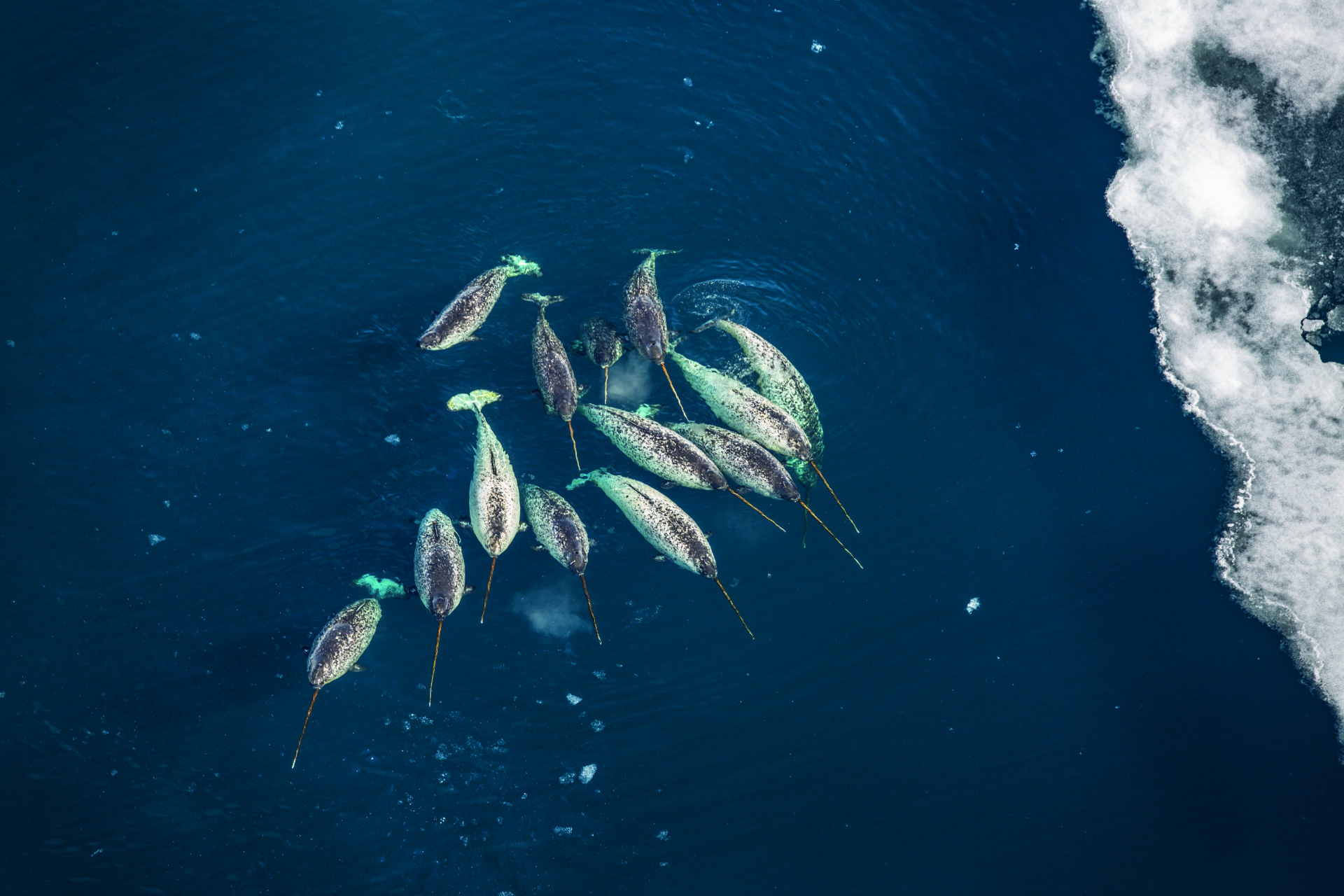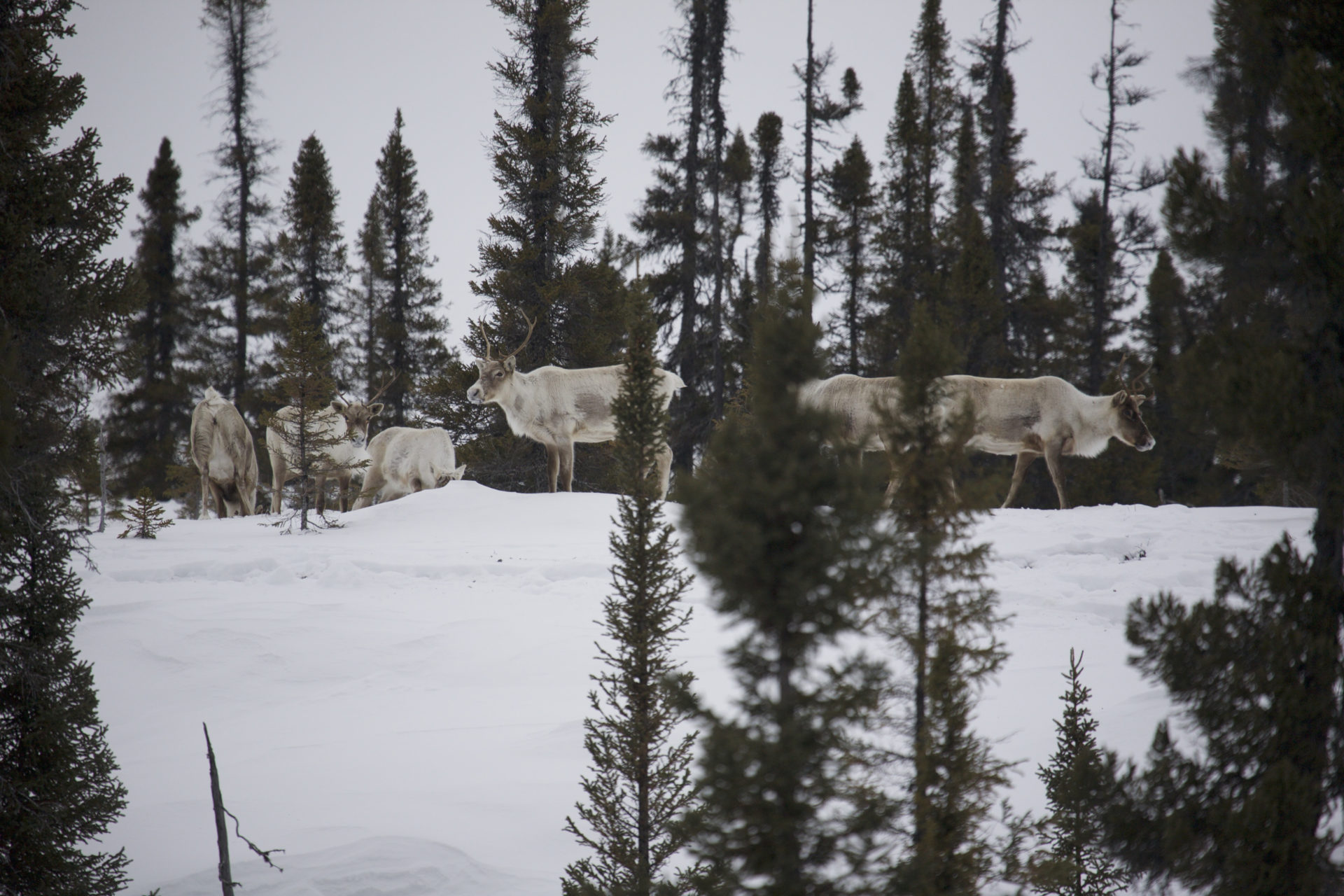
The Right Honourable Mary Simon aims to be an Arctic fox
Canada’s first-ever Indigenous governor general doesn’t play favourites among our majestic natural wonders, but she...
With more than 30 million household views, the Netflix documentary series Our Planet has become the most-watched documentary series ever. To top it off, Our Planet earned 10 Emmy nominations last week.
The eight-part series has been hailed for recognizing the proverbial elephants in the room — the climate emergency and the extinction crisis — unlike its predecessors Blue Planet and Planet Earth.
In early May, a United Nations report warned that one million species are threatened with extinction and in April Environment and Climate Change Canada reported with “high confidence” that Canada is warming at twice the rate of the rest of the world.
Amidst the stunning high-resolution footage of the planet’s natural bounty in the documentary, viewers also hear startling facts about the natural world from narrator David Attenborough. During a caribou scene in the first episode, for instance, Attenborough tells the audience: “The herd has lost nearly 70 per cent of its numbers in the last 20 years.”
Our Planet took four years to complete, with more than 600 crew members filming in 50 countries across the world. The caribou scene is one of at least two scenes in the series that were shot in Canada.
WWF-Canada assisted in helping filmmakers connect with “the right situations and the right people on the ground to collect the best footage possible,” Brandon Laforest, a senior specialist in Arctic species and ecosystems for WWF-Canada, told The Narwhal.
For the narwhal scene in the documentary, Laforest guided the filmmakers through the permitting process to film near Arctic Bay, Nunavut.
“But more importantly, my job was to help them culturally navigate what they wanted to do in order to be respectful of the local people who would ultimately be providing the opportunity to film wildlife in the north,” Laforest said.

Brandon Laforest lives in Iqaluit, Nunavut, and works as a senior specialist for Arctic species and ecosystems for WWF-Canada.
Netflix released a heart-pounding behind-the-scenes sequence from the narwhal shoot, during which an Inuit guide warns filmmakers a crack in the sea ice may strand them if they don’t move quickly.
“You’re sitting on a moving platform. That’s kind of the beauty of the ecosystem there,” Laforest said. “It’s creating those migratory paths for the narwhal.”
The resulting three-minute scene in episode two is some of the first footage ever caught of narwhals underwater.
“The scene really brought forward an interesting part of narwhal,” he said. “ It’s really underwater where you get to see the face of the animal, which is important for people to connect. You get to see their shape and playfulness and the gracefulness — and to hear them as well.”
Given there are no narwhals in aquariums, it’s an animal the vast majority of people — even those living in Canada — will never see.
“I think it’s important that we bring them to the screens of people so we get growing appreciation of the conservation of narwhals,” Laforest said.
“Narwhal are really having a moment in the last few years here in Canada. … They’re growing in our cultural awareness as Canadians as a species that’s within our national boundaries.”
In the summer months, 90 per cent of the world’s narwhal can be found within Canadian territory. Rough estimates put the world population of narwhals at 123,000.
“It’s a species that we as a nation have a very big responsibility for the proper management and conservation. It’s also culturally extremely important to Inuit communities.”

Narwhals waiting at the ice edge for a crack in the ice to appear, big enough for them to swim down to access their summering grounds in Nunavut. Photo: Sophie Lanfear / Silverback / Netflix
Narwhal are almost entirely dependent on auditory cues for communication, navigation and accessing food. As a result, they’ve been identified as the Arctic marine mammal most threatened by Arctic shipping.
“There’s a really high overlap with critical narwhal habitat as shippers start to eye the Northwest Passage,” Laforest said.
“We’re talking about an animal that has lived in relative isolation from the effects of industrial development and they’re now going to be exposed to potentially regular shipping,” he added.
For a whole variety of reasons, narwhals have been identified as the most susceptible Arctic marine mammal to the climate emergency.
“They have a very limited range, they have a very low genetic diversity and very specific food habits that are passed down through generations. And they also rely on sea ice.”
A reduction of sea ice is one of the most marked effects of climate change.
“The Arctic marine food web has its basis in the sea algae that lives under the ice,” Laforest said. “You have potential really big shifts in their food web ecology.”
Another big change for narwhals is an observed increase in the number of killer whales in their territory.
“If you notice the narwhal, they don’t have that really charismatic dorsal fin on their backs that we associate with whales and dolphins,” Laforest explained. “They use a bony ridge on their backs to break thin ice to breathe.”
With declining sea ice, killer whales (which do have dorsal fins) are exploiting this new territory.
“And they are a voracious predator of narwhals,” Laforest said. “There are many threats. And that’s not even getting to the potentiality of oil and gas development and seismic testing.”
https://www.youtube.com/watch?time_continue=177&v=UVwYygnGkPE
As the narwhal comes under multiple threats, we still know relatively little about the species.
“We’re still trying to figure out what that darn tusk is for. There are a lot of theories and it’s not a one-stop answer,” Laforest said.
“There’s likely some sexual selection to it; it’s a display of health and virility as a male. But two per cent of females have a tusk, which is not typical for a sexually selected trait.”
There’s also evidence that indicates the tusk is used as a sensory organ that can sense salinity and temperature changes and recent footage showed a narwhal using its tusk to stun and eat fish at the surface of the water.
“Inuit had noted that, but it was the first time it was captured on video,” Laforest said.
Researchers are also still unsure of where exactly narwhal calve.
“We know where some of them calve, but sometimes they just show up with calves and people aren’t sure where that calf was born,” Laforest said.
“Last year, the narwhal just didn’t show up around Pond Inlet and nobody knows where they were. The community wasn’t able to harvest as many as they need.”
But of all the things we don’t know, there’s one that worries Laforest the most.
“The biggest thing we don’t know is how they’re going to react to all the changes that are being thrown at them.”
Narwhal populations seem to be relatively stabile, at least for now.
“They’re sustainably harvested by Inuit. There’s a quota system in place to ensure that harvest remains sustainable,” Laforest said.
That said, given how little we know about narwhal, keeping track of how many there are is not an exact science.
To help fill some of the knowledge gaps, Laforest is involved in a research project
, in partnership with the University of Calgary and Pond Inlet Hunters and Trappers, looking at stress hormones in narwhal over time.
Using archives and harvest samples from the 1970s up until now, the researchers are trying to answer one question: are narwhals more stressed out?
Researchers are focusing on the narwhals living in close proximity to the Mary River iron ore mine on Baffin Island, which Laforest described as the largest industrial development happening in Nunavut.
The mine, one of the northernmost mines in the world, ships iron ore to markets in Europe and Asia.
“In the ice-free season, there are multiples ships every day,” Laforest said. “What are the impacts of big industrial development on narwhal?”
The documentary series also showcased another charismatic Canadian species: caribou.
The caribou scenes in the first episode were filmed outside of Kuujaurpik, Quebec, and showed the Leaf River herd, one of two major herds of eastern migratory caribou in Quebec, being hunted by a pack of wolves.
The Leaf River herd has declined from a population of more than 600,000 animals in 2013 to fewer than 187,000 caribou today.
“Wherever there’s caribou, there are caribou people. We have a real duty as Canadians with this animal,” Laforest said.

Caribou in Quebec. Photo: Myloh Villaronga / Silverback / Netflix
While woodland caribou in B.C. and Alberta are in deep trouble — with Indigenous guardians resorting to penning the pregnant females in some cases — the migratory tundra caribou in the north are in slightly better shape.
“There’s still a chance to get it right with these caribou,” Larforest said.
“In the south, we created this huge fragmented landscape for caribou … and you’re left with isolated populations.”
Laforest said there’s a big opportunity to learn from the south, where landscapes have been fragmented to the extent that they create barriers to the movement of wildlife.
“No individual project is to blame. It’s the cumulative effects of multiple decisions over time. All of that together has created this irreversible effect,” Laforest said.
“We’re doomed to repeat the mistakes of the south if we don’t start looking at the landscape-level right now, rather than at the individual project level.”
Get the inside scoop on The Narwhal’s environment and climate reporting by signing up for our free newsletter. A $335 million funding commitment to fund...
Continue reading
Canada’s first-ever Indigenous governor general doesn’t play favourites among our majestic natural wonders, but she...

In Alberta, a massive open-pit coal mine near Jasper National Park is hoping to expand...

A trade war could help remake B.C.’s food system, but will family farmers be left...
